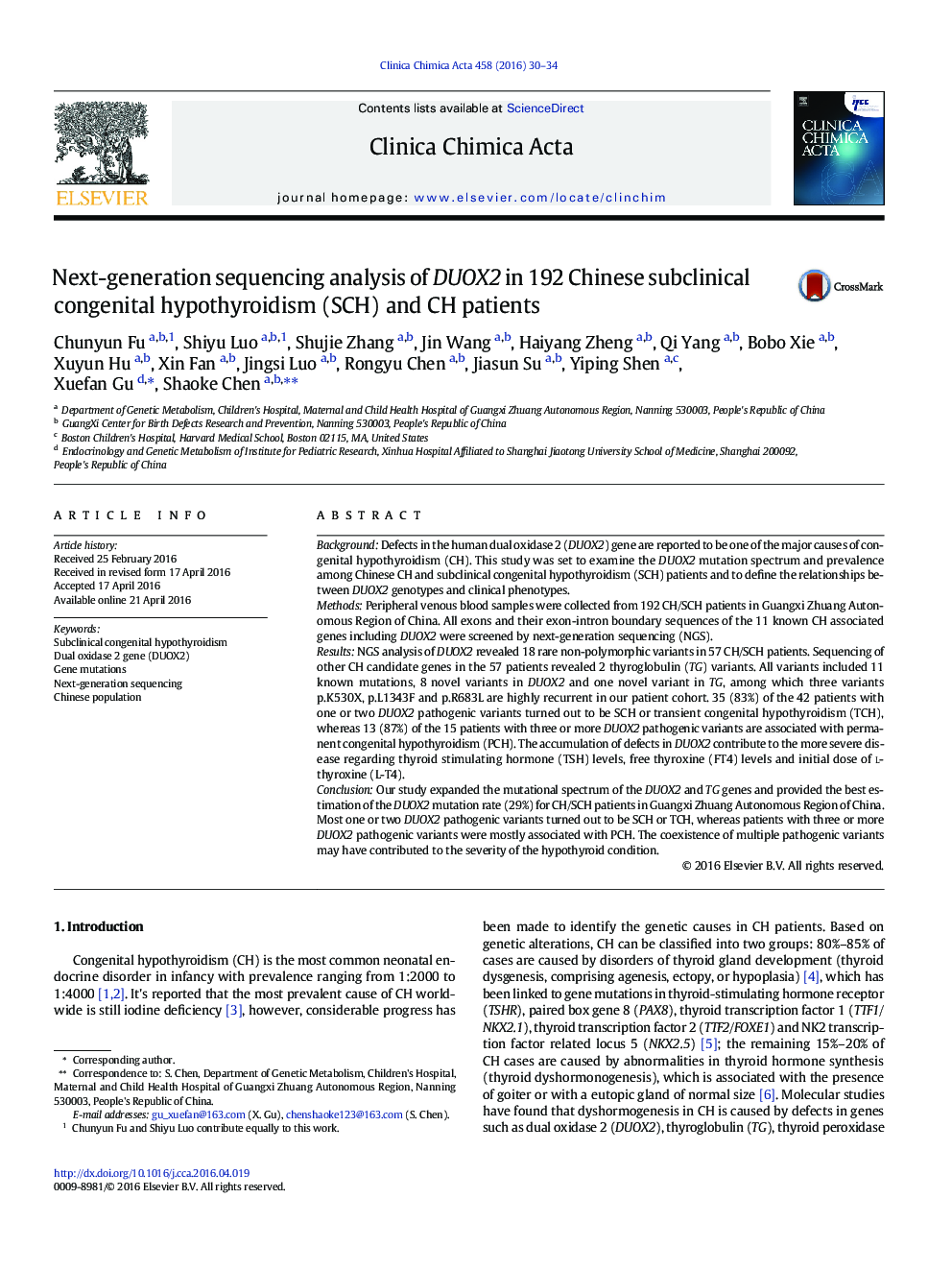| کد مقاله | کد نشریه | سال انتشار | مقاله انگلیسی | نسخه تمام متن |
|---|---|---|---|---|
| 1965098 | 1538641 | 2016 | 5 صفحه PDF | دانلود رایگان |
• We provided the best estimation of the DUOX2 mutation rate (29%) for CH/SCH patients in Guangxi, China.
• Most one or two DUOX2 pathogenic variants turned out to be SCH or TCH.
• Patients with three or more DUOX2 pathogenic variants were mostly associated with PCH.
• The coexistence of multiple pathogenic variants may have contributed to the severity of the hypothyroid condition.
• We reported 8 novel variants in DUOX2 and one novel variant in TG.
BackgroundDefects in the human dual oxidase 2 (DUOX2) gene are reported to be one of the major causes of congenital hypothyroidism (CH). This study was set to examine the DUOX2 mutation spectrum and prevalence among Chinese CH and subclinical congenital hypothyroidism (SCH) patients and to define the relationships between DUOX2 genotypes and clinical phenotypes.MethodsPeripheral venous blood samples were collected from 192 CH/SCH patients in Guangxi Zhuang Autonomous Region of China. All exons and their exon-intron boundary sequences of the 11 known CH associated genes including DUOX2 were screened by next-generation sequencing (NGS).ResultsNGS analysis of DUOX2 revealed 18 rare non-polymorphic variants in 57 CH/SCH patients. Sequencing of other CH candidate genes in the 57 patients revealed 2 thyroglobulin (TG) variants. All variants included 11 known mutations, 8 novel variants in DUOX2 and one novel variant in TG, among which three variants p.K530X, p.L1343F and p.R683L are highly recurrent in our patient cohort. 35 (83%) of the 42 patients with one or two DUOX2 pathogenic variants turned out to be SCH or transient congenital hypothyroidism (TCH), whereas 13 (87%) of the 15 patients with three or more DUOX2 pathogenic variants are associated with permanent congenital hypothyroidism (PCH). The accumulation of defects in DUOX2 contribute to the more severe disease regarding thyroid stimulating hormone (TSH) levels, free thyroxine (FT4) levels and initial dose of l-thyroxine (L-T4).ConclusionOur study expanded the mutational spectrum of the DUOX2 and TG genes and provided the best estimation of the DUOX2 mutation rate (29%) for CH/SCH patients in Guangxi Zhuang Autonomous Region of China. Most one or two DUOX2 pathogenic variants turned out to be SCH or TCH, whereas patients with three or more DUOX2 pathogenic variants were mostly associated with PCH. The coexistence of multiple pathogenic variants may have contributed to the severity of the hypothyroid condition.
Journal: Clinica Chimica Acta - Volume 458, 1 July 2016, Pages 30–34
